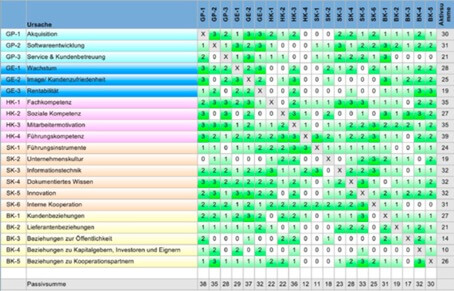Historical introduction
The consideration of intangible assets in companies began in the 1960s years. At that time, the focus was on Human capitalwhich led to the models of 'human resource accounting'.
While approaches from the 1980s also included other aspects of intangible capital, they largely focussed on the financial aspect. Through the so-called Balanced Score Card entered the 1990s soft factors to the fore.
Holistic approaches were first promoted, developed and trialled in Scandinavia, such as the so-called Intellectual Capital Statement (Danish Ministry of Science, Technology and Innovation 2003). The German name "Wissensanbilanz" is the equivalent of this term and can also be traced back to it in terms of content.¹
The aim of the intellectual capital statement
The aim of the intellectual capital statement is to Identification of the factors of intangible capital that are critical to successand their interaction.
Not only employees from the legal or IP department are involved. The formation of a interdisciplinary and cross-divisional teams of employees is a central component of the intellectual capital statement. Relevant information is collected by a moderator using questionnaires. The subsequent evaluation provides comprehensive insights into topics such as
- Corporate culture
- Motivation
- Documentation
- Expertise
- etc.
Structure and mode of operation
When carrying out the intellectual capital statement, the moderator follows a predefined scheme. The scope may vary depending on the project.


The so-called impact matrix is a central component of the intellectual capital statement. By forming asset and liability totals, a statement can be made about the extent to which a factor is influenced by others or influences them.
The intellectual capital statement - Made in Germany [...] supports the inventory and communication of intellectual capital on the one hand and decision-making in corporate management on the other.
Based on the organisation's vision and strategy, intellectual capital, which in turn is further specified in 3 types of capital (human capital, structural capital, relationship capital), is recorded. In the course of drawing up the intellectual capital statement, the three types of capital are measured, assessed in terms of quantity, quality and system in relation to the strategic objectives and their interactions are shown. This makes the relevant aspects for the company's success transparent and makes it possible to prioritise fields of action.
The intellectual capital statement is usually drawn up in a cross-disciplinary and cross-departmental team. Up to three workshop days are planned for this.²
Are you looking for a moderator to conduct an intellectual capital statement?
Sources & further information
¹ Knowledge balance guide_2.0_status_2013.pdf
² wikipedia.org/wiki/balance-of-knowledge






